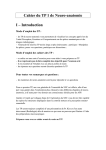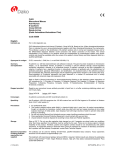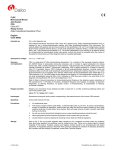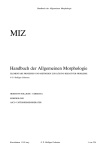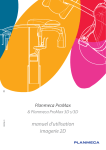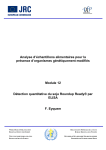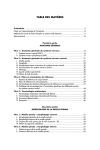Download Monoclonal Mouse
Transcript
FLEX Monoclonal Mouse Anti-Thyroid Transcription Factor, TTF-1 Clone 8G7G3/1 Ready-to-Use (Dako Autostainer/Autostainer Plus) Code IS056 English Intended use For in vitro diagnostic use. FLEX Monoclonal Mouse Anti-Thyroid Transcription Factor, Clone 8G7G3/1 (1), Ready-to-Use, (Dako Autostainer/Autostainer Plus), is intended for use in immunohistochemistry together with Dako Autostainer/Autostainer Plus instruments. This antibody is useful for the identification of tumors from lung and thyroid. The clinical interpretation of any staining or its absence should be complemented by morphological studies using proper controls and should be evaluated within the context of the patient's clinical history and other diagnostic tests by a qualified pathologist. Summary and explanation Thyroid transcription factor-1 (TTF-1) belongs to a family of homeodomain transcription factors and is selectively expressed in thyroid, lung and diencephalon. TTF-1 has been identified as a transcriptional regulator of thyroidspecific genes and has also been shown to be important in the activation of pulmonary-specific differentiation genes (2,3). Refer to Dako’s General Instructions for Immunohistochemical Staining or the detection system instructions of IHC procedures for: 1) Principle of Procedure, 2) Materials Required, Not Supplied, 3) Storage, 4) Specimen Preparation, 5) Staining Procedure, 6) Quality Control, 7) Troubleshooting, 8) Interpretation of Staining, 9) General Limitations. Reagent provided Ready-to-Use monoclonal mouse antibody provided in liquid form in a buffer containing stabilizing protein and 0.015 mol/L NaN3. Clone: 8G7G3/1 (1) Isotype: IgG1, kappa Immunogen Recombinant rat TTF-1 (1) Specificity Monoclonal anti-rat TTF-1 clone 8G7G3/1 (anti-TTF-1) has also been shown to react with rat, mouse and human TTF-1. In Western blotting, anti-TTF-1 specifically identified a 40 kDa band in immunoblots of nuclear extracts or whole cell lysates from the TTF-1 positive cell lines MLE 15 (mouse lung epithelial), H441-4 (human lung adenocarcinoma), H 345 (human small cell carcinoma) and rat type II pneumocyte cells. Cell lines lacking TTF-1 mRNA such as HeLa and 3T3 were unreactive. Anti-TTF-1 was also found to function in ELISA assays using recombinant TTF-1 (1). Precautions 1. For professional users. 2. This product contains sodium azide (NaN3), a chemical highly toxic in pure form. At product concentrations, though not classified as hazardous, sodium azide may react with lead and copper plumbing to form highly explosive build-ups of metal azides. Upon disposal, flush with large volumes of water to prevent metal azide build-up in plumbing. 3. As with any product derived from biological sources, proper handling procedures should be used. 4. Wear appropriate Personal Protective Equipment to avoid contact with eyes and skin. 5. Unused solution should be disposed of according to local, State and Federal regulations. Storage Store at 2-8 °C. Do not use after expiration date stamped on vial. If reagents are stored under any conditions other than those specified, the conditions must be verified by the user. There are no obvious signs to indicate instability of this product. Therefore, positive and negative controls should be run simultaneously with patient specimens. If unexpected staining is observed which cannot be explained by variations in laboratory procedures and a problem with the antibody is suspected, contact Dako Technical Support. Specimen preparation including materials required but not supplied The antibody can be used for labeling formalin-fixed, paraffin-embedded tissue sections. Tissue specimens should be cut into sections of approximately 4 µm. Pre-treatment with heat-induced epitope retrieval (HIER) is required. Optimal results are obtained by pretreating tissues using EnVision FLEX Target Retrieval Solution, High pH (10x) (Dako Autostainer/Autostainer Plus) (Code K8012/K8014). Deparaffinized sections: Pre-treatment of deparaffinized formalin-fixed, paraffin-embedded tissue sections is recommended using Dako PT Link (Code PT100/PT101). For details, please refer to the PT Link User Guide. (116996-001) 307128EFG_001 p. 1/7 Follow the pre-treatment procedure outlined in the package insert for EnVision FLEX Target Retrieval Solution, High pH (10x) (Dako Autostainer/Autostainer Plus) (Code K8012/K8014). The following parameters should be used for PT Link: Pre-heat temperature: 65 °C; epitope retrieval temperature and time: 97 °C for 20 (±1) minutes; cool down to 65 °C. Rinse sections with diluted room temperature EnVision FLEX Wash Buffer (10x) (Dako Autostainer/Autostainer Plus) (Code K8012). Paraffin-embedded sections: As alternative specimen preparation, both deparaffinization and epitope retrieval can be performed in the PT Link using a modified procedure. See the PT Link User Guide for instructions. After the staining procedure has been completed, the sections must be dehydrated, cleared and mounted using permanent mounting medium. The tissue sections should not dry out during the treatment or during the following immunohistochemical staining procedure. For greater adherence of tissue sections to glass slides, the use of Dako Silanized Slides (Code S3003) is recommended. Staining procedure including materials required but not supplied The recommended visualization system is EnVision FLEX+, Mouse, High pH (Dako Autostainer/Autostainer Plus) (Code K8012). The staining steps and incubation times are pre-programmed into the software of Dako Autostainer/Autostainer Plus instruments, using the following protocols: Template protocol: FLEXRTU2 (200 uL dispense volume) or FLEXRTU3 (300 uL dispense volume) Autoprogram (without counterstaining): TTF-1 or Autoprogram (with counterstaining): TTF-1H The Auxiliary step should be set to “rinse buffer” in staining runs with ≤10 slides. For staining runs with >10 slides the Auxiliary step should be set to “none.” This ascertains comparable wash times. All incubation steps should be performed at room temperature. For details, please refer to the Operator’s Manual for the dedicated instrument. If the protocols are not available on the used Dako Autostainer instrument, please contact Dako Technical Services. Optimal conditions may vary depending on specimen and preparation methods, and should be determined by each individual laboratory. If the evaluating pathologist should desire a different staining intensity, a Dako Application Specialist/Technical Service Specialist can be contacted for information on re-programming of the protocol. Verify that the performance of the adjusted protocol is still valid by evaluating that the staining pattern is identical to the staining pattern described in “Performance characteristics.” Counterstaining in hematoxylin is recommended using EnVision FLEX Hematoxylin (Dako Autostainer/Autostainer Plus) (Code K8018). Non-aqueous, permanent mounting medium is recommended. Positive and negative controls should be run simultaneously using the same protocol as the patient specimens. The positive control tissue should include thyroid follicular epithelial cells and the cells/structures should display reaction patterns as described for this tissue in “Performance characteristics” in all positive specimens. The recommended negative control reagent is FLEX Negative Control, Mouse (Dako Autostainer/Autostainer Plus) (Code IS750). Staining interpretation The cellular staining pattern is nuclear. Performance characteristics Normal tissues: Anti-TTF-1 has been shown to be immunoreactive with Type II cells and Clara cells of the lung and follicular cells from thyroid, but was unreactive with all other normal tissues examined. The following tissues were found to lack TTF-1 expression: pituitary, prostate, testes, adrenal gland, skin, breast, kidney, colon, liver, pancreas, small intestine, brain and stomach (1,4,5). Abnormal tissues: TTF-1 expression has been demonstrated by IHC in neoplastic cells derived from tumors of the lung and thyroid. Anti-TTF-1 was found to react positively with the majority of pulmonary small cell carcinomas and primary and metastatic pulmonary adenocarcinomas, whereas a smaller proportion of large cell undifferentiated lung carcinomas (26%) were immunoreactive (1,5). TTF-1 has also been reported to react positively with squamous cell carcinomas of the lung (14%) (6). TTF-1 immunoreactivity was demonstrated in the majority of pulmonary atypical carcinoids but was rare in typical carcinoids (7). TTF-1 has also been detected in (3/3) thyroid papillary carcinomas (1). TTF-1 expression was not found in the majority of other tumors tested such as primary breast carcinomas, breast carcinomas metastatic to the lung, renal cell carcinomas, primary and metastatic colon and prostate adenocarcinomas, and malignant mesotheliomas (1,4,5,8,9). When using a polyclonal antibody to TTF-1, some focal immunoreactivity was observed in 1/66 gastric adenocarcinomas and 1/8 endometrial adenocarcinomas (8). (116996-001) 307128EFG_001 p. 2/7 Français Réf. IS056 Utilisation prévue Pour utilisation diagnostique in vitro. FLEX Monoclonal Mouse Anti-Thyroid Transcription Factor, clone 8G7G3/1 (1), Ready-to-Use, (Dako Autostainer/Autostainer Plus), est destiné à une utilisation en immunohistochimie avec les instruments Dako Autostainer/Autostainer Plus. Cet anticorps est utile pour identifier les tumeurs du poumon et de la thyroïde. L’interprétation clinique de toute coloration ou son absence doit être complétée par des études morphologiques en utilisant des contrôles appropriés et doit être évaluée en fonction des antécédents cliniques du patient et d’autres tests diagnostiques par un pathologiste qualifié. Résumé et explication Le facteur de transcription thyroïdien-1 (TTF-1) appartient à une famille de facteurs de transcription à homéodomaine et s’exprime de manière sélective dans la thyroïde, le poumon et le diencéphale. Le TTF-1 a été identifié comme étant un régulateur transcriptionnel des gènes spécifiques à la thyroïde et s’est également avéré jouer un rôle important dans l’activation des gènes de différenciation spécifiques au poumon (2,3). Se référer aux Instructions générales de coloration immunohistochimique de Dako ou aux instructions du système de détection relatives aux procédures IHC pour plus d’informations concernant les points suivants : 1) Principe de procédure, 2) Matériels requis mais non fournis, 3) Conservation, 4) Préparation des échantillons, 5) Procédure de coloration, 6) Contrôle qualité, 7) Dépannage, 8) Interprétation de la coloration, 9) Limites générales. Réactifs fournis Anticorps monoclonal de souris prêt à l’emploi fourni sous forme liquide dans un tampon contenant une protéine stabilisante et 0,015 mol/L d’azide de sodium. Clone : 8G7G3/1 (1) Isotype : IgG1, kappa Immunogène TTF-1 recombinant de rat (1) Spécificité Il a également été démontré que l’anticorps monoclonal anti-TTF-1 de rat, clone 8G7G3/1 (anti-TTF-1) réagit au TTF-1 humain, de souris et de rat. Au cours d’une analyse par Western blot, l’anti-TTF-1 a identifié de manière spécifique une bande de 40 kDa dans des transferts d’extraits nucléaires ou des lysats cellulaires totaux provenant de pneumocytes MLE 15 (épithélium pulmonaire de souris), H441-4 (adénocarcinome pulmonaire humain), H 345 (carcinome à petites cellules humain) et de pneumocytes de type II de rat, tous issus de lignées cellulaires positives au TTF-1. Les lignées cellulaires ne comportant pas l’ARNm du TTF-1 comme HeLa et 3T3 ne sont pas réactives. On a également observé que l’anti-TTF-1 fonctionnait lors de tests ELISA utilisant du TTF-1 recombinant (1). Précautions 1. Pour utilisateurs professionnels. 2. Ce produit contient de l’azide de sodium (NaN3), produit chimique hautement toxique dans sa forme pure. Aux concentrations du produit, bien que non classé comme dangereux, l’azide de sodium peut réagir avec le cuivre et le plomb des canalisations et former des accumulations d’azides métalliques hautement explosifs. Lors de l’élimination, rincer abondamment à l’eau pour éviter toute accumulation d’azide métallique dans les canalisations. 3. Comme avec tout produit d’origine biologique, des procédures de manipulation appropriées doivent être respectées. 4. Porter un vêtement de protection approprié pour éviter le contact avec les yeux et la peau. 5. Les solutions non utilisées doivent être éliminées conformément aux réglementations locales et nationales. Conservation Conserver entre 2 et 8 °C. Ne pas utiliser après la date de péremption imprimée sur le flacon. Si les réactifs sont conservés dans des conditions autres que celles indiquées, celles-ci doivent être validées par l’utilisateur. Il n’y a aucun signe évident indiquant l’instabilité de ce produit. Par conséquent, des contrôles positifs et négatifs doivent être testés en même temps que les échantillons de patient. Si une coloration inattendue est observée, qui ne peut être expliquée par un changement des procédures du laboratoire, et en cas de suspicion d’un problème lié à l’anticorps, contacter l’assistance technique de Dako. Préparation des échantillons y compris le matériel requis mais non fourni L’anticorps peut être utilisé pour le marquage des coupes de tissus inclus en paraffine et fixés au formol. L'épaisseur des coupes d'échantillons de tissu doit être d’environ 4 µm. Le prétraitement avec un démasquage d’épitope induit par la chaleur (HIER) est nécessaire. Des résultats optimaux sont obtenus en prétraitant les tissus à l’aide de la EnVision FLEX Target Retrieval Solution, High pH (10x), (Dako Autostainer/Autostainer Plus) (Réf. K8012/K8014). Coupes déparaffinées : Le pré-traitement des coupes de tissus déparaffinés fixés au formol et inclus en paraffine est recommandé à l’aide du Dako PT Link (Réf. PT100/PT101). Pour plus de détails, se référer au Guide d’utilisation du PT Link. Suivre la procédure de pré-traitement indiquée dans la notice pour la EnVision FLEX Target Retrieval Solution, High pH (10x), (Dako Autostainer/Autostainer Plus) (Réf. K8012/K8014). Les paramètres suivants doivent être utilisés pour le PT Link : Température de préchauffage : 65 °C; température et durée de restauration de l’épitope : 97 °C pour 20 (±1) minutes ; laisser refroidir jusqu’à 65 °C. Rincer les coupes avec un EnVision FLEX Wash Buffer (10x), dilué à température ambiante (Dako Autostainer/Autostainer Plus) (Réf. K8012). (116996-001) 307128EFG_001 p. 3/7 Coupes incluses en paraffine : Comme préparation alternative des échantillons, le déparaffinage et la restauration de l’épitope peuvent être réalisés dans le PT Link à l’aide d’une procédure modifiée. Se référer aux instructions du Guide d’utilisation du PT Link. Une fois que la procédure de coloration est terminée, les coupes doivent être déshydratées, lavées et montées à l’aide d’un milieu de montage permanent. Les coupes de tissus ne doivent pas sécher lors du traitement ou lors de la procédure de coloration immunohistochimique suivante. Pour une meilleure adhérence des coupes de tissus sur les lames de verre, il est recommandé d’utiliser des lames Dako Silanized Slides (Réf. S3003). Procédure de coloration y compris le matériel requis mais non fourni Le système de visualisation recommandé est le EnVision FLEX+, Mouse, High pH (Dako Autostainer/Autostainer Plus) (Réf. K8012). Les étapes de coloration et d’incubation sont préprogrammées dans le logiciel des instruments Dako Autostainer/Autostainer Plus, à l’aide des protocoles suivants : Protocole modèle : FLEXRTU2 (volume de distribution de 200 µl) ou FLEXRTU3 (volume de distribution de 300 µl) Autoprogram (sans contre-coloration) : TTF-1 ou Autoprogram (avec contre-coloration) : TTF-1H L’étape Auxiliary doit être réglée sur « rinse buffer » lors des cycles de coloration avec ≤10 lames. Pour les cycles de coloration de >10 lames, l’étape Auxiliary doit être réglée sur « none ». Cela confirme des temps de lavage comparables. Toutes les étapes d’incubation doivent être effectuées à température ambiante. Pour plus de détails, se référer au Manuel de l’opérateur spécifique à l'instrument. Si les protocoles ne sont pas disponibles sur l’instrument Dako Autostainer utilisé, contacter le service technique de Dako. Les conditions optimales peuvent varier en fonction du prélèvement et des méthodes de préparation, et doivent être déterminées par chaque laboratoire individuellement. Si le pathologiste qui réalise l’évaluation désire une intensité de coloration différente, un spécialiste d’application/spécialiste du service technique de Dako peut être contacté pour obtenir des informations sur la re-programmation du protocole. Vérifier que l'exécution du protocole modifié est toujours valide en vérifiant que le schéma de coloration est identique au schéma de coloration décrit dans les « Caractéristiques de performance ». Il est recommandé d’effectuer une contre-coloration à l’aide d’hématoxyline EnVision FLEX Hematoxylin, (Dako Autostainer/Autostainer Plus) (Réf. K8018). L’utilisation d’un milieu de montage permanent non aqueux est recommandée. Des contrôles positifs et négatifs doivent être réalisés en même temps et avec le même protocole que les échantillons du patient. Le contrôle de tissu positif doit comprendre les cellules épithéliales folliculaires et les cellules/structures doivent présenter des schémas de réaction tels que décrits pour ces tissus dans les « Caractéristiques de performance » pour tous les échantillons positifs. Le contrôle négatif recommandé est le FLEX Negative Control, Mouse, (Dako Autostainer/Autostainer Plus) (Réf. IS750). Interprétation de la coloration Le schéma de coloration cellulaire est nucléaire. Caractéristiques de performance Tissus sains : L’anti-TTF-1 s’est avéré immunoréactif aux cellules de type II et aux cellules de Clara pulmonaires, ainsi qu’aux cellules folliculaires issues de la thyroïde mais n’est pas réactif à tous les autres tissus sains examinés. On a noté que les tissus suivants n’expriment pas le TTF-1 : hypophyse, prostate, testicule, glande surrénale, peau, sein, rein, côlon, foie, pancréas, intestin grêle, cerveau et estomac (1,4,5). Tissus tumoraux : L’expression de la TTF-1 a été démontrée par IHC dans des cellules néoplasiques provenant de tumeurs du poumon et de la thyroïde. L’anti-TTF-1 a réagi positivement à la majorité des carcinomes pulmonaires à petites cellules et aux adénocarcinomes pulmonaires primaires et métastasiques, alors qu’une proportion inférieure de carcinomes pulmonaires indifférenciés à grandes cellules (26 %) étaient immunoréactifs (1,5). Le TTF-1 s’est également révélé réagir positivement aux carcinomes à cellules squameuses du poumon (14 %) (6). L’immunoréactivité du TTF-1 a été démontrée dans la majorité des carcinoïdes pulmonaires atypiques mais reste rare dans les carcinoïdes typiques (7). Le TTF-1 a aussi été détecté dans 3 cas sur 3 de carcinomes papillaires de la thyroïde (1). L’expression du TTF-1 n’a pas été observée dans la majorité des autres tumeurs testées comme les carcinomes mammaires primitifs, les carcinomes mammaires ayant métastasé dans le poumon, les carcinomes à cellules rénales, les adénocarcinomes de la prostate et du côlon primitifs et métastatiques, ainsi que dans les mésothéliomes malins (1,4,5,8,9). En cas d’utilisation d’un anticorps polyclonal dirigé contre le TTF-1, une certaine immunoréactivité focale a été observée dans 1 cas sur 66 d’adénocarcinomes gastriques et dans 1 cas sur 8 d’adénocarcinomes endométriaux (8). (116996-001) 307128EFG_001 p. 4/7 Deutsch Code-Nr. IS056 Zweckbestimmung Zur In-vitro-Diagnostik. FLEX Monoclonal Mouse Anti-Thyroid Transcription Factor, Clone 8G7G3/1 (1), Ready-to-Use, (Dako Autostainer/Autostainer Plus) ist zur Verwendung in der Immunhistochemie in Verbindung mit Dako Autostainer/Autostainer Plus-Geräten bestimmt. Dieser Antikörper dient zur Erkennung von Tumoren der Lunge und Schilddrüse. Die klinische Auswertung einer eventuell eintretenden Färbung sollte durch morphologische Studien mit ordnungsgemäßen Kontrollen ergänzt werden und von einem qualifizierten Pathologen unter Berücksichtigung der Krankengeschichte und anderer Diagnostiktests des Patienten vorgenommen werden. Zusammenfassung und Erklärung Der Schilddrüsentranskriptionsfaktor-1 (TTF-1) gehört zu einer Familie von Homöodomän-Transkriptionsfaktoren und wird selektiv in Schilddrüse, Lunge und Zwischenhirn exprimiert. TTF-1 wurde als Transkriptionsregulator schilddrüsenspezifischer Gene identifiziert, der bei der Aktivierung lungenspezifischer Gene der Zelldifferenzierung ebenfalls eine wichtige Rolle spielt (2,3). Folgende Angaben bitte den Allgemeinen Richtlinien zur immunhistochemischen Färbung von Dako oder den Anweisungen des Detektionssystems für IHC-Verfahren entnehmen: 1) Verfahrensprinzip, 2) Erforderliche, aber nicht mitgelieferte Materialien, 3) Aufbewahrung, 4) Vorbereitung der Probe, 5) Färbeverfahren, 6) Qualitätskontrolle, 7) Fehlersuche und -behebung, 8) Auswertung der Färbung, 9) Allgemeine Beschränkungen. Geliefertes Reagenz Gebrauchsfertiger, monoklonaler Maus-Antikörper in flüssiger Form in einem Puffer, der stabilisierendes Protein und 0,015 mol/L NaN3 enthält. Klon: 8G7G3/1 (1) Isotyp: IgG1, Kappa Immunogen Rekombinanter Ratten-TTF-1 (1) Spezifität Monoclonal Anti-Rat TTF-1 Clone 8G7G3/1 (Anti-TTF-1) reagiert nachweislich mit TTF-1 von Ratte, Maus und Mensch. Beim Western-Blotting konnte Anti-TTF-1 eine Bande von 40 kDa in Immunoblots von Zellextrakten oder Ganzzelllysaten aus den TTF-1-positiven Zelllinien MLE 15 (Lungenepithel, Maus), H441-4 (menschliches Lungenadenokarzinom), H 345 (menschliches kleinzelliges Karzinom) und Typ-II-Pneumozytenzellen der Ratte spezifisch identifizieren. Zelllinien ohne TTF-1 mRNA, wie HeLa und 3T3, reagierten nicht. Die Funktion von AntiTTF-1 wurde auch in ELISA-Assays mit rekombinantem TTF-1 (1) nachgewiesen. Vorsichtsmaßnahmen 1. Nur für Fachpersonal bestimmt. 2. Dieses Produkt enthält Natriumazid (NaN3), eine in reiner Form äußerst giftige Chemikalie. Natriumazid kann auch in als ungefährlich eingestuften Konzentrationen mit Blei- und Kupferrohren reagieren und hochexplosive Metallazide bilden. Nach der Entsorgung stets mit viel Wasser nachspülen, um Metallazidansammlungen in den Leitungen vorzubeugen. 3. Wie alle Produkte biologischen Ursprungs müssen auch diese entsprechend gehandhabt werden. 4. Geeignete Schutzkleidung tragen, um Augen- und Hautkontakt zu vermeiden. 5. Nicht verwendete Lösung ist entsprechend örtlichen, bundesstaatlichen und staatlichen Richtlinien zu entsorgen. Lagerung Bei 2–8 °C aufbewahren. Nach Ablauf des auf dem Fläschchen aufgedruckten Verfalldatums nicht mehr verwenden. Werden die Reagenzien unter anderen als den angegebenen Bedingungen aufbewahrt, müssen diese Bedingungen vom Benutzer validiert werden. Es gibt keine offensichtlichen Anzeichen für eine eventuelle Produktinstabilität. Positiv- und Negativkontrollen sollten daher zur gleichen Zeit wie die Patientenproben getestet werden. Falls es zu einer unerwarteten Färbung kommt, die sich nicht durch Unterschiede bei Laborverfahren erklären lässt und auf ein Problem mit dem Antikörper hindeutet, ist der technische Kundendienst von Dako zu verständigen. Vorbereitung der Probe und erforderliche, aber nicht mitgelieferte Materialien Der Antikörper eignet sich zur Markierung von formalinfixierten und paraffineingebetteten Gewebeschnitten. Gewebeproben sollten in Schnitte von ca. 4 µm Stärke geschnitten werden. Die Vorbehandlung durch hitzeinduzierte Epitopdemaskierung (HIER) ist erforderlich. Optimale Ergebnisse können durch Vorbehandlung der Gewebe mit EnVision™ FLEX Target Retrieval Solution, High pH (10x), (Dako Autostainer/Autostainer Plus) (Code-Nr. K8012/K8014) erzielt werden. Entparaffinierte Schnitte: Die Vorbehandlung der entparaffinierten, formalinfixierten, paraffineingebetteten Gewebeschnitte sollte mit Dako PT Link (Code-Nr. PT100/PT101) erfolgen. Weitere Informationen hierzu siehe PT Link-Benutzerhandbuch. Vorbehandlung gemäß der Beschreibung in der Packungsbeilage für EnVision™ FLEX Target Retrieval Solution, High pH (10x) (Dako Autostainer/Autostainer Plus) (Code-Nr. K8012/K8014) durchführen. Für PT Link sollten die folgenden Parameter verwendet werden: Vorwärmtemperatur: 65 °C; Temperatur und Zeit für Epitopdemaskierung: 97 °C für 20 (±1) Minuten; auf 65 °C abkühlen lassen. Schnitte mit auf Raumtemperatur gebrachtem, verdünntem EnVision™ FLEX Wash Buffer (10x) (Dako Autostainer/Autostainer Plus) (Code-Nr. K8012) abspülen. (116996-001) 307128EFG_001 p. 5/7 Paraffineingebettete Schnitte: Zur Probenpräparation kann für Entparaffinierung und Epitopdemaskierung im PT Link auch ein modifiziertes Verfahren verwendet werden. Weitere Informationen siehe PT LinkBenutzerhandbuch. Nach Abschluss des Färbeverfahrens müssen die Schnitte dehydriert, geklärt und unter Verwendung eines permanenten Fixiermittels auf die Objektträger aufgebracht werden. Die Gewebeschnitte dürfen während der Behandlung oder während des anschließenden immunhistochemischen Färbeverfahrens nicht austrocknen. Zur besseren Haftung der Gewebeschnitte an den Glasobjektträgern wird die Verwendung von Dako Silanized Slides (Code-Nr. S3003) empfohlen. Färbeverfahren und erforderliche, aber nicht mitgelieferte Materialien Das empfohlene Visualisierungssystem ist EnVision™ FLEX+, Mouse, High pH, (Dako Autostainer/Autostainer Plus) (Code-Nr. K8012). Die Färbeschritte und Inkubationszeiten sind in der Software der Dako Autostainer/Autostainer Plus-Geräte mit den folgenden Protokollen vorprogrammiert: Matrix-Protokoll: FLEXRTU2 (200 µl Abgabevolumen) oder FLEXRTU3 (300 µl Abgabevolumen) Autoprogram (ohne Gegenfärbung): TTF-1 oder Autoprogram (mit Gegenfärbung): TTF-1H Bei Färbedurchläufen mit höchstens 10 Objektträgern sollte der „Zusatz“-Schritt auf „Pufferspülgang“ eingestellt werden. Für Färbedurchläufe mit mehr als 10 Objektträgern den „Zusatz“-Schritt auf „Keine“ einstellen. Dies gewährleistet vergleichbare Waschzeiten. Alle Inkubationsschritte sollten bei Raumtemperatur durchgeführt werden. Nähere Einzelheiten bitte dem Benutzerhandbuch für das jeweilige Gerät entnehmen. Wenn die Färbeprotokolle auf dem verwendeten Dako Autostainer-Gerät nicht verfügbar sind, bitte den Technischen Kundendienst von Dako verständigen. Optimale Bedingungen können je nach Probe und Präparationsverfahren unterschiedlich sein und sollten vom jeweiligen Labor selbst ermittelt werden. Falls der beurteilende Pathologe eine andere Färbungsintensität wünscht, kann ein Anwendungsspezialist oder Kundendiensttechniker von Dako bei der Neuprogrammierung des Protokolls helfen. Die Leistung des angepassten Protokolls muss verifiziert werden, indem gewährleistet wird, dass das Färbemuster mit dem unter „Leistungsmerkmale“ beschriebenen Färbemuster identisch ist. Die Gegenfärbung in Hämatoxylin sollte mit EnVision™ FLEX Hematoxylin (Dako Autostainer/Autostainer Plus) (Code-Nr. K8018) ausgeführt werden. Empfohlen wird ein nichtwässriges, permanentes Fixiermittel. Positiv- und Negativkontrollen sollten zur gleichen Zeit und mit demselben Protokoll wie die Patientenproben getestet werden. Das positive Kontrollgewebe sollte Schilddrüsen-Follikelepithelzellen enthalten und die Zellen/Strukturen müssen in allen positiven Proben die für dieses Gewebe unter „Leistungsmerkmale“ beschriebenen Reaktionsmuster aufweisen. Das empfohlene Negativ-Kontrollreagenz ist FLEX Negative Control, Mouse, (Dako Autostainer/Autostainer Plus) (Code-Nr. IS750). Auswertung der Färbung Das zelluläre Färbemuster ist nukleär. Leistungsmerkmale Gesundes Gewebe: Die Immunreaktivität von Anti-TTF-1 mit Typ II-Zellen und Clarazellen der Lunge sowie mit Schilddrüsen-Follikelzellen wurde nachgewiesen, alle übrigen untersuchten Geweben reagierten nicht. Folgende Gewebe exprimierten TTF-1 nicht: Hypophyse, Prostata, Hoden, Nebenniere, Haut, Brust, Niere, Dickdarm, Leber, Pankreas, Dünndarm, Gehirn und Magen (1,4,5). Pathologisches Gewebe: Mit immunhistochemischen Methoden wurde die Anti-TTF-1-Expression in neoplastischen Zellen aus Lungen- und Schilddrüsentumoren nachgewiesen. Nach den Beobachtungen reagierte Anti-TTF-1 positiv mit dem Großteil der Kleinzellenkarzinome und der primären und metastatischen Adenokarzinome der Lunge, während sich ein geringerer Anteil der undifferenzierten Großzellenkarzinome der Lunge (26 %) immunreaktiv (1,5) verhielt. Außerdem reagierte TTF-1 positiv mit Plattenepithelkarzinomen der Lunge (14 %) (6). Die Immunreaktivität von TTF-1 wurde im Großteil der atypischen Lungenkarzinome bestätigt, trat jedoch in typischen Karzinomen nur selten auf (7). Darüber hinaus wurde TTF-1 in (3 von 3) Papillenkarzinomen der Schilddrüse (1) nachgewiesen. Bei der Mehrzahl der übrigen untersuchten Tumore trat keine TTF-1-Expression auf, beispielsweise bei Mammakarzinomen und ihren Lungenmetastasen, bei Hypernephromen, Primärtumoren und Metastasen von Adenokarzinomen in Dickdarm und Prostata sowie malignen Mesotheliomen (1,4,5,8,9). Mit einem polyklonalen Antikörper gegen TTF-1 wurden einige Reaktionsherde bei 1/66 Magenadenokarzinomen und 1/8 endometranen Adenokarzinomenen (8) beobachtet. (116996-001) 307128EFG_001 p. 6/7 References Bibliographie Literaturangaben 1. Holzinger A, Dingle S, Bejarano PA, Miller M-A, Weaver TE, Di Lauro R, Whitsett JA. Monoclonal antibody to thyroid transcription factor-1: Production, characterization and usefulness in tumor diagnosis. Hybridoma 1996; 15(1):49 2. Lazzaro D, Price M, De Felice M, Di Lauro R. The transcription factor TTF-1 is expressed at the onset of thyroid and lung morphogenesis and in restricted regions of the fetal brain. Development 1991; 113:1093 3. Bohinski RJ, Di Lauro R, Whitsett JA. The lung-specific surfactant protein B gene promoter is a target for thyroid transcription factor-1 and hepatocyte nuclear factor-3, indicating common factors for organ-specific gene expression along the foregut axis. Mol Cell Biol 1994; 14(9):5671 4. Bohinski RJ, Bejarano PA, Balko G, Warnick RE and Whitsett JA. Determination of lung as the primary site of cerebral metastatic adenocarcinomas using monoclonal antibody to thyroid transcription factor-1. J Neuro-Oncol. 1998; 40(3):227-31 5. Khoor A, Whitsett JA, Stahlman MT, Stephenson M, Olson SJ, Cagle PT. Utility of surfactant protein B precursor and thyroid transcription factor 1 in differentiating adenocarcinoma of the lung from malignant mesothelioma. Hum Pathol 1999; 30(6):695-700 6. Haque AK, Syed S, Lele SM, Freeman DH, Adegboyega PA. Immunohistochemical study of thyroid transcription factor-1 and HER2/neu in non-small cell lung cancer: strong thyroid transciption factor-1 expression predicts better survival. Appl. Immunohistochem Mol Morph 2002 June; 10(2)103 7. Folpe AL, Hansen D, Gown AM, Schmidt RA. Expression of thyroid transcription factor-1 (TTF-1) is common in pulmonary atypical carcinoids and small cell carcinomas, but not typical carcinoids. Lab Invest 1998; 78(1):174A 8. Bejarano PA, Baughman RP, Biddinger PW, Miller MA, Fenoglio-Preiser C, Al-Kafaji B, Di Lauro R, Whitsett JA. Surfactant proteins and thyroid transcription factor-1 in pulmonary and breast carcinomas. Mod Pathol 1996; 9(4):445 9. Harlamert HA, Mira J, Yassin R, Bejarano PA, Baughman R, Miller MA, Whitsett J. Distinguishing primary lung adenocarcinomas from metastatic breast adenocarcinomas in cytology specimens using TTF-1 and cytokeratins 7 and 20. Mod Pathol 1997; 10(1):A185 Edition 09/07 (116996-001) 307128EFG_001 p. 7/7







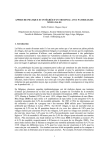
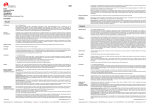
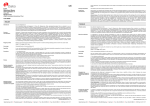

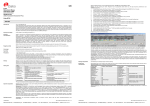

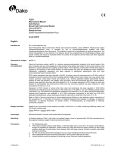
![TTF-1 [SPT24] - Zytomed Systems](http://vs1.manualzilla.com/store/data/005793963_1-173a06c06d5648223f763723a0e98383-150x150.png)
